This homemade tomatillo salsa verde recipe is so easy to make and much better than any bottled salsa. It’s a low-carb and low-FODMAP dip or salsa that is bursting with flavor. It can be used as a topping for your favorite Mexican food, served with chips or even baked with eggs.
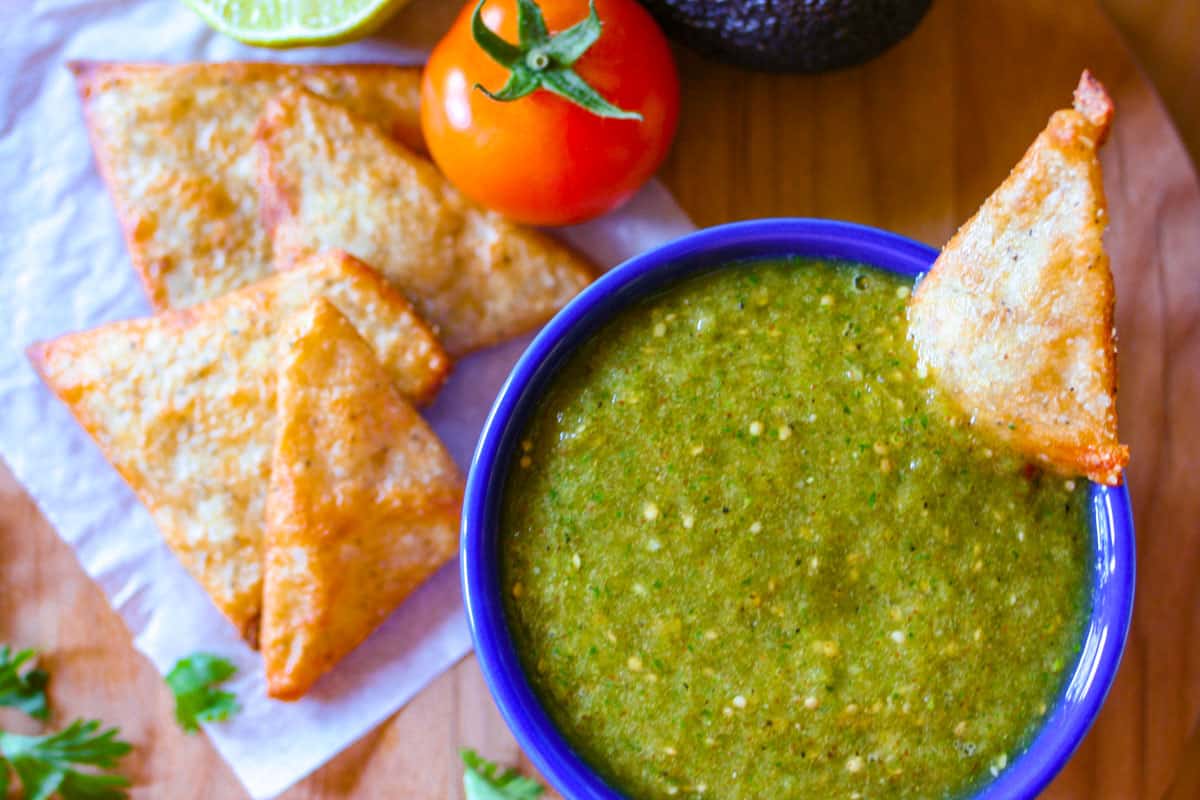
This green chili salsa with tomatillos is one of my favorite tomatillo recipes and just may be my favorite salsa. The color and authentic Mexican flavors make this the perfect condiment for a variety of dishes. While I don't include onion or garlic to keep this a FODMAP-friendly recipe, you can certainly add them if you don't follow a low-FODMAP diet. But if you're like me and eat little to no alliums, be sure to stop by my low-FODMAP recipes section for more no onion, no garlic recipe inspiration.
Serve this salsa verde alongside some creamy Low-FODMAP Guacamole, Radish Salsa with Cilantro or Pineapple Habanero Salsa. It also pairs well with anything made with Low-FODMAP Taco Seasoning such as my Instant Pot Chicken Taco Soup. If you love some heat, this Pineapple Habanero Sauce may be your new favorite thing.
There’s no way I’m ever going back to store-bought salsa verde - not when I can make a big batch of fresh, homemade salsa in my own kitchen. I’ve found that the store-bought versions can be a little heavy on the vinegar.
Why you'll love this recipe
- Roasted tomatillo salsa is such a simple recipe, it can be whipped up in a short time and it’s totally irresistible
- It's packed with flavor and can be enjoyed in many ways - it's not just for Mexican inspired dishes
- Tomatillos are a healthy addition to a keto or low-FODMAP diet
- This is a versatile recipe, with variations below to suit your particular taste
- Not only is this a low-FODMAP dip and salsa, it's keto-friendly, paleo and Whole30 compliant
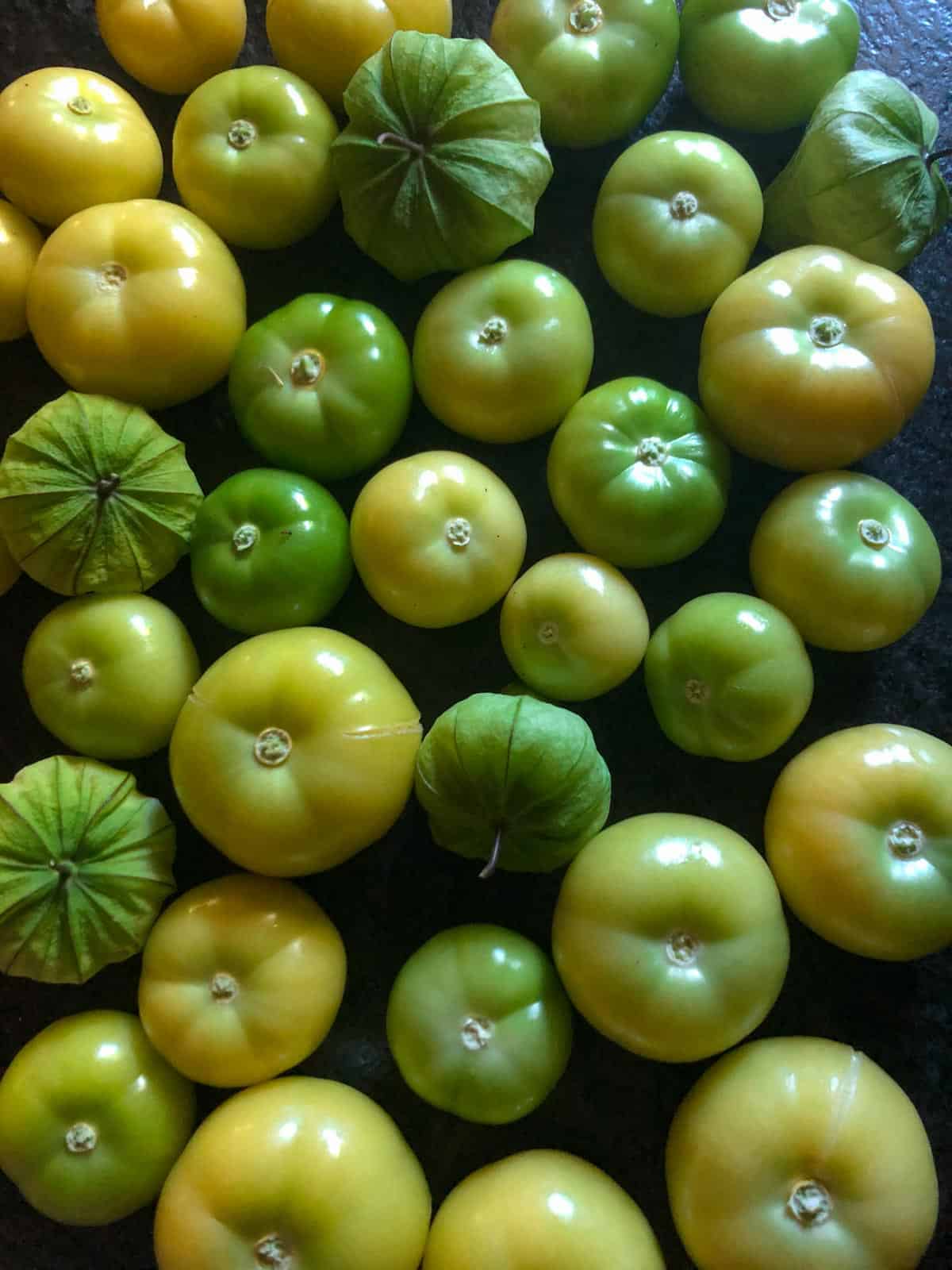
Ingredients
This recipe includes ingredients that are packed full of flavor and are sure to enhance almost any dish:
- Tomatillos - these have such a fresh flavor. If you can't find tomatillos, you can always use tomatoes for a delicious red tomoato salsa.
- Green onions - Use the green part only for low-FODMAP. If you don't follow a low-FODMAP diet, feel free to use red onion instead.
- Cilantro - fresh cilantro is best. You can use the leaves and small stems. If you don't like cilantro, you can replace it with fresh parsley.
- Jalapeno pepper - you decide on how much heat to add and what variety of green chili you'd like to use. Try serrano (which is hotter than jalapeno) or poblano and Anaheim peppers for a milder heat.
- Lime juice - while this isn't a traditional ingredient, it adds a brightness to the salsa
- Salt and pepper - just a bit of each to taste
- Chipotle powder - optional, but is so, so good
- Extra virgin olive oil - for coating the tomatillos for roasting

Where to find tomatillos
Tomatillos are often available year-round. You can usually find them near the jalapeno peppers at the grocery store.
In the summer, they’re typically available at your local farmer’s market.
If you can’t find fresh tomatillos, they are also available canned.
Do you garden? If you have any space for a garden (even a small container garden), you can grow them and freeze them yourself.
Growing tomatillos
If you can grow tomatoes, you can grow tomatillos! They’re actually very pretty bushes, especially when the little lantern-looking husks have formed on the plant.
We’re big on organic gardening at our house. While we don’t have a big garden space, we do manage to grow a couple of plants every year. We will roast or smoke tomatillos and then freeze them to use in recipes year-round. There's nothing like growing and cooking with your own harvest.
Tomatillos are perfect for container gardening, garden boxes and raised beds, as well as planted directly in the ground.
Even if you aren’t a home gardening expert, try growing some tomatillos. In order for the blooms to be pollinated, you should have at least two plants. They need to cross-pollinate in order to produce fruit.
Tomatillos come in a variety of colors: green, purple, yellow and even orange.
To learn more, visit this link about organic container gardening. And go to this link to find tomatillo seeds.
How to select tomatillos
Press the tomatillos: Look for fruit that are firm and have filled their papery wrappers. They should not be soft or squishy when pressed.
Peeling back the wrapper: When you peel back the wrapper, they should be a lovely light green color with no blemishes or wrinkles.
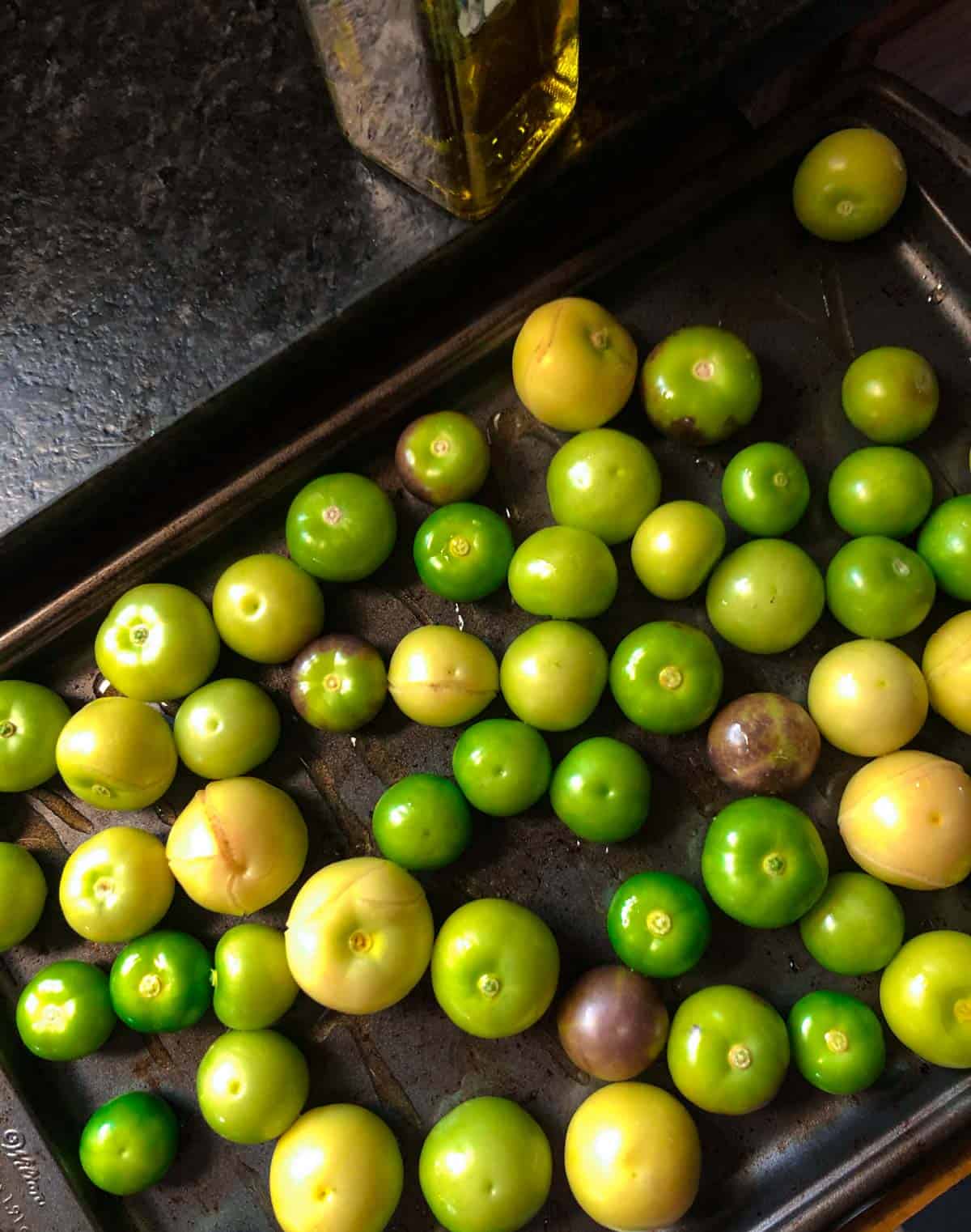
How to peel tomatillos
Prepping tomatillos is so easy. Simply peel off the papery wrapper to reveal the beautiful green fruit. They will be a bit sticky. I like to use a mild soap to wash the skins, then rinse them well in a strainer and pat dry with a towel. Some folks don't use soap and it's certainly not necessary - it's only my personal preference. You can just rinse them off and pat dry with a towel.
How to prepare tomatillos for salsa
I enjoy making salsa from tomatillos that have been roasted or smoked. A smoked homemade chipotle salsa verde is nothing short of magical (I’m just a big fan of chipotle powder). But, roasting the tomatillos in the oven makes a perfectly delicious salsa, as well.

Oven roasting
Pre-heat the oven to 350F. Add the tomatillos to a baking sheet pan and drizzle with olive oil. Roast for about 45 minutes, until the skins and flesh have softened. Roasting time will vary depending on the size of your tomatillos.
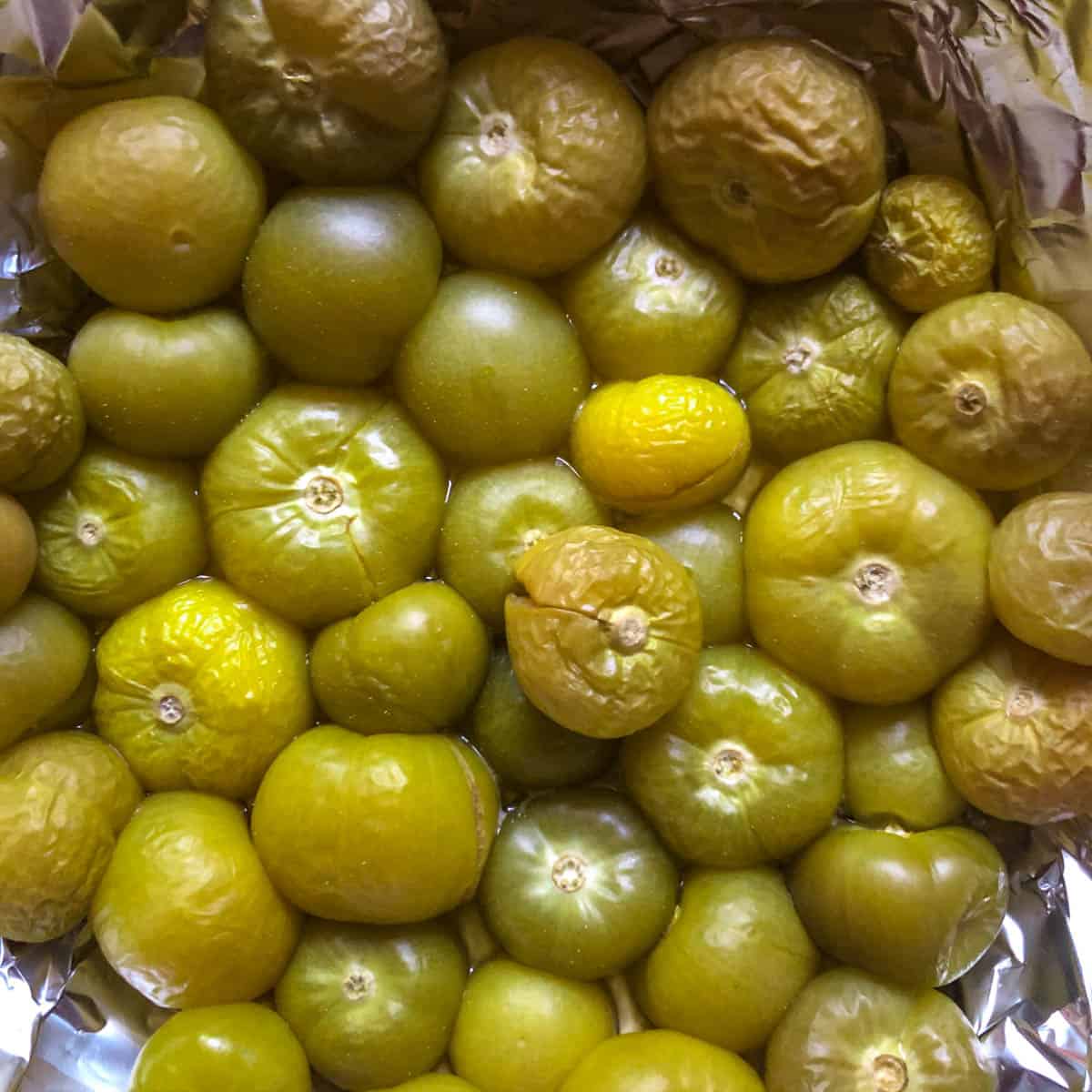
Smoking
Line a roasting pan, sheet pan or vegetable grill pan with foil. Add the tomatillos and drizzle with olive oil. Smoke at 275F for about 90 minutes – until the flesh and skins have softened.
Note on smoking: These directions are based on smoking on a Traeger wood pellet grill. Smoke time may vary based on your smoker.
Instructions
This is such an easy recipe to make and takes two simple steps to bring it together:
- Prepare the tomatillos and roast or smoke, according to the instructions, above
- Add all of the ingredients to a blender or food processor and process to your desired consistency. I like to use the large blending cup of my Nutribullet personal blender or my Vitamix if making large quantities.
- Taste and adjust seasonings if necessary
Variations and add-ins
- Add garlic and onion - This recipe doesn’t contain any high FODMAP foods like onion or garlic, but if you don't follow a low-FODMAP diet, consider adding ¼ of a red or white onion and/or 1-2 cloves of garlic
- Play around with spices – try adding a dash of cumin or substituting the chipotle or chili powder with masala or even curry
- Add some Aleppo or red pepper flakes – if you don’t have any fresh peppers to add that little bit of extra heat, Aleppo pepper flakes or red pepper flakes are a perfect substitute. Not familiar with Aleppo peppers? They’re a staple in my pantry and you can read my post dedicated to them (about Aleppo peppers).
- Make a red tomatillo salsa - add 1-2 tomatoes to the roasting pan with the tomatillos and blend with the rest of the ingredients
How long does salsa last in the fridge?
This salsa verde should keep well in the fridge for 7-10 days. If you won’t use it up during that time, try freezing it.
Can I freeze salsa?
You sure can! Freezing salsa is a perfect way to preserve that freshness. Simply store it in any tightly sealed container. I like to freeze fresh salsa in mason jars and use dissolvable labels to add a package date.
For smaller portions, consider freezing in an ice-cube tray, then placing the frozen cubes in a freezer-safe bag.
Your salsa verde can be frozen for up to 6 months.
Serving suggestions
The sky is the limit! Here are some of my favorite ways to enjoy this healthy salsa:
- Top an omelet or scrambled eggs
- Try baking eggs in a ramekin with two tablespoons of salsa and a sprinkle of cheese (think Cotija!)
- Top off your favorite burrito, Chicken Taco Soup, torta, tacos, enchiladas, nachos or quesadillas
- Use it as a tomatillo sauce for anything you’re grilling or roasting
- Add a half cup to your skillet when pan frying fish
- Add a cup to a baking dish and bake with your favorite white fish
- Serve with chips or as a dip for veggies
- Try fish tacos with salsa verde
FAQ
A baby tomato? A green tomato? Not exactly. Even though the name translates to ‘little tomato’, they actually aren’t baby tomatoes at all.
These little fruits are native to Mexico and look like little green tomatoes with a dry husk wrapping around the outside. They come in a variety of colors – usually green (most common), but also purple, yellow and orange. When cooked, they all turn a light, lovely greenish-yellow.
Raw tomatillos have a tangy, acidic, citrusy flavor. But when roasted, they have a bright, fresh flavor which makes them perfect for verde sauce.
Like tomatoes, tomatillos belong to the nightshade family of plants, along with potatoes, eggplant and peppers.
That’s a very good question, but it may have something to do with their past being sort of dark and mystical.
It may also have to do with the toxicity of these Solanaceae plants. The leaves and the stalk of these plants are toxic, but the fruit is not.
However, tomatillos and tomatoes are not ‘deadly nightshade’. Deadly nightshade is known as belladonna, in the same family, but it is not the same plant.
According to Monash University (the authority on low-FODMAP foods), tomatillos are considered low-FODMAP in serving sizes up to 75g.
Honestly, I have never seen any salsa verde in a jar that is low-FODMAP. Every one contains onion and garlic. That’s why I love this recipe! It’s a simple recipe made with natural ingredients, without the worry of excess fructans that can cause digestive upset.
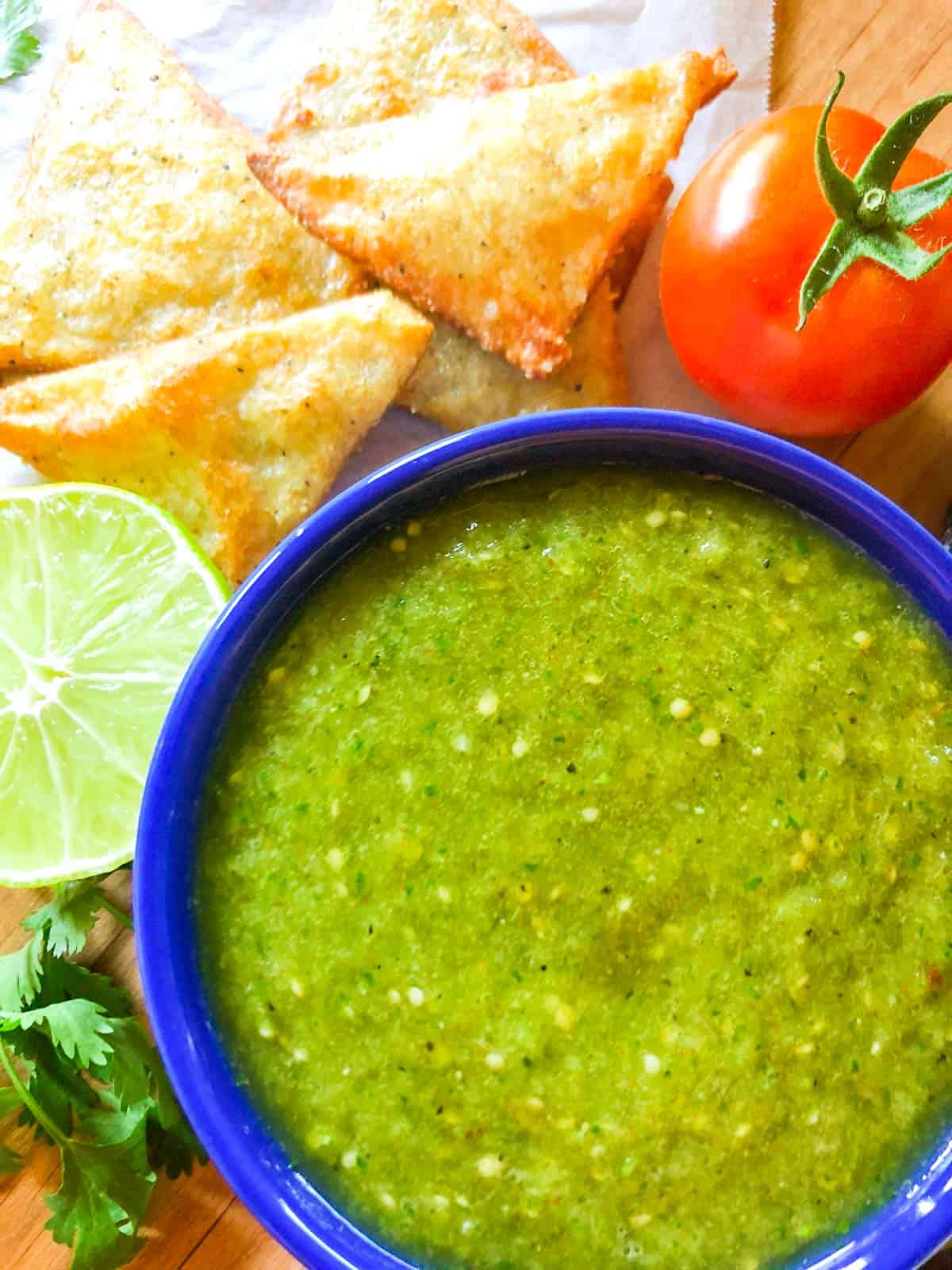
Other recipes you might like
- Low-FODMAP Guacamole (Keto and AIP Friendly)
- Radish Salsa with Cilantro (Keto and Low-FODMAP)
- Red Chimichurri Sauce
- Pineapple Habanero Salsa
- Low-FODMAP Taco Seasoning
- Mexican Chimichurri
This post contains affiliate links. As an Instacart and Amazon Associate, I earn from qualifying purchases.
📖 Recipe
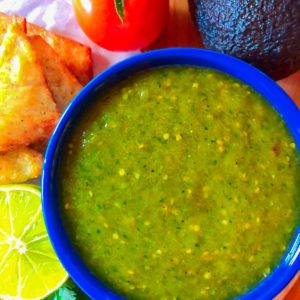
Tomatillo Green Chili Salsa (Salsa Verde)
Ingredients
- 2 green onions (large - green part only for low-FODMAP)
- 1 pound tomatillos (husks removed)
- 1 jalapeno pepper (finely chopped, seeds removed - optional)
- ½ cup cilantro (fresh - firmly packed)
- 1 tablespoon lime juice (fresh)
- 1 teaspoon salt (plus more to taste)
- ¼ teaspoon black pepper
- ½ teaspoon chipotle powder (or chili powder. Optional, but it's so, so good.)
- Olive oil (for roasting the tomatillos)
Instructions
Prepare the tomatillos
- Remove the husks, wash and dry the tomatillos.
If roasting in oven
- Pre-heat the oven to 350 °F
- Spread them evenly on a large baking sheet and drizzle with olive oil.
- Roast for about 45 minutes or until the tomatillos are soft and allow to cool.
If smoking on your smoker
- Pre-heat your Traeger grill to 275 °F
- Line a baking sheet or vegetable pan with foil and add the tomatillos.
- Smoke for 90 minutes or until soft and let cool.
Prepare the salsa
- Add the cooked tomatillos to a blender, food processor, or nutribullet with the remaining ingredients. Pulse or blend until the mixture reaches your desired consistency.
- Taste and add more salt and pepper if desired.
Notes
Variations and add-ins
- Add garlic and onion - This recipe doesn’t contain any high FODMAP foods like onion or garlic, but if you don't follow a low-FODMAP diet, consider adding ¼ of a red or white onion and/or 1-2 cloves of garlic
- Play around with spices – try adding a dash of cumin or substituting the chipotle or chili powder with masala or even curry
- Add some Aleppo or red pepper flakes – if you don’t have any fresh peppers to add that little bit of extra heat, Aleppo pepper flakes or red pepper flakes are a perfect substitute. Not familiar with Aleppo peppers? They’re a staple in my pantry and you can read my post dedicated to them (about Aleppo peppers).
- Make a red tomatillo salsa - add 1-2 tomatoes to the roasted pan with the tomatillos and blend with the rest of the ingredients
Serving suggestions
- Top an omelet or scrambled eggs
- Try baking eggs in a ramekin with two tablespoons of salsa and a sprinkle of cheese (think Cotija!)
- Top off your favorite burrito, torta, tacos, enchiladas, nachos or quesadillas
- Use it as a tomatillo sauce for anything you’re grilling or roasting
- Add a half cup to your skillet when pan frying fish
- Add a cup to a baking dish and bake with your favorite white fish
- Serve with chips or as a dip for veggies
- Try fish tacos with salsa verde
Nutrition
*Net carbs = carbohydrates - fiber
Nutritional information is an estimate, calculated using online tools and does not include optional ingredients unless otherwise indicated.

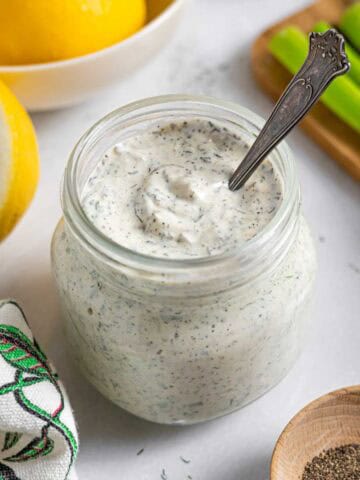
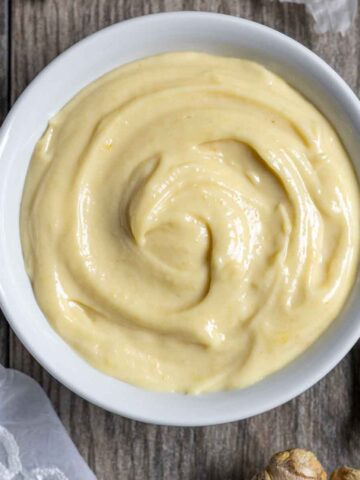


Comments
No Comments